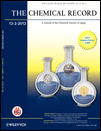
CHEMICAL RECORD
Scope & Guideline
Exploring the Frontiers of Chemical Knowledge
Introduction
Aims and Scopes
- Catalytic Processes and Mechanisms:
Research articles that explore the development and optimization of catalytic processes, including transition metal catalysis, organocatalysis, and photocatalysis, aimed at enhancing reaction efficiency and selectivity. - Energy Storage and Conversion:
Papers focusing on materials and technologies for energy storage solutions, such as batteries, supercapacitors, and fuel cells, emphasizing advancements in materials science and electrochemistry. - Sustainable Chemistry and Green Technologies:
Contributions that highlight sustainable practices in chemical synthesis, waste reduction, and the development of eco-friendly materials and processes. - Nanotechnology and Advanced Materials:
Research on the synthesis and application of nanomaterials, including their use in biosensing, drug delivery, and environmental remediation. - Chemical Biology and Medicinal Chemistry:
Studies that bridge chemistry and biology, focusing on the development of new therapeutic agents, drug delivery systems, and biomolecular interactions. - Materials for Environmental Remediation:
Innovative approaches to utilizing chemical materials for the removal of pollutants from the environment, including water treatment and air purification. - Organic Synthesis and Methodology:
Research on new synthetic methods, including multicomponent reactions and functionalization strategies, that expand the toolbox for organic chemists. - Theoretical and Computational Chemistry:
Articles that utilize theoretical models and computational methods to predict chemical behavior, optimize reactions, and design new materials.
Trending and Emerging
- Electrochemical Energy Storage Technologies:
There is an increasing emphasis on research related to innovative battery systems, including lithium-ion, sodium-ion, and aluminum-ion batteries, as well as supercapacitors, driven by the demand for efficient energy storage solutions. - Sustainable and Green Chemistry Innovations:
A growing number of publications focus on sustainable practices, including the development of eco-friendly materials, waste reduction strategies, and renewable energy sources, aligning with global sustainability goals. - Photocatalysis and Solar Energy Utilization:
Research exploring photocatalytic processes for energy conversion and environmental remediation has gained traction, reflecting a shift towards harnessing solar energy for practical applications. - Nanomaterials for Biomedical Applications:
There is a noticeable increase in studies investigating the use of nanomaterials in medical diagnostics, drug delivery, and therapy, highlighting the intersection of chemistry and healthcare. - Artificial Intelligence and Machine Learning in Chemistry:
Emerging methodologies utilizing AI and machine learning for chemical modeling and prediction are becoming more prominent, indicating a trend towards integrating computational approaches in experimental research. - Interdisciplinary Approaches in Chemical Research:
An increasing number of papers are reflecting interdisciplinary collaboration, combining insights from chemistry, biology, materials science, and engineering to address complex scientific challenges.
Declining or Waning
- Traditional Organic Synthesis Techniques:
There has been a noticeable decline in articles solely focused on classical organic synthesis techniques without integrating modern approaches or technologies, as the field moves towards more innovative and efficient methodologies. - Inorganic Chemistry without Practical Applications:
Research that solely discusses inorganic compounds without a clear application or relevance to emerging technologies has become less prevalent, as the journal increasingly favors studies linking inorganic chemistry to practical applications. - Non-Green Chemistry Practices:
Studies that do not address sustainability or environmental impact are becoming less common, reflecting a broader shift in the chemical community towards green chemistry principles. - Basic Research with Limited Implications:
Papers that present basic research findings without any implications for future applications or advancements in technology are being published less frequently, as the journal encourages research that contributes to real-world challenges.
Similar Journals
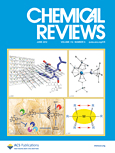
CHEMICAL REVIEWS
Pioneering Reviews for the Modern Chemist.Chemical Reviews, published by the American Chemical Society, is a leading journal in the field of chemistry, renowned for its comprehensive and authoritative reviews on a wide range of chemical topics. With its ISSN 0009-2665 and E-ISSN 1520-6890, this prestigious journal has maintained a remarkable trajectory since its inception in 1924, continuously contributing to advancements in the chemical sciences. As a Q1 journal in the Chemistry (miscellaneous) category, it stands at the forefront of research, boasting an impressive Scopus rank of #1 out of 408 in the field of General Chemistry, positioning it within the top 1% of the field. Chemical Reviews offers invaluable insights and serves as a critical resource for researchers, professionals, and students alike, facilitating knowledge exchange and fostering innovation in chemistry. While currently not open access, it remains a vital component of the scientific community, gathering an extensive readership base eager for the latest developments, methodologies, and theoretical frameworks in this dynamic discipline.

REVUE ROUMAINE DE CHIMIE
Illuminating the Path of Chemistry Research and DiscoveryREVUE ROUMAINE DE CHIMIE is a distinguished academic journal in the field of chemistry, published by EDITURA ACAD ROMANE in Romania. With an ISSN of 0035-3930, this journal has been a valuable platform for disseminating original research and insights in the diverse realm of chemistry since its inception. The journal currently operates under a competitive tier, categorized in Q4 for miscellaneous chemistry fields, as reflected in its Scopus ranking of #348 out of 408, placing it within the 14th percentile. Aiming to foster scientific discourse and innovation, the REVUE ROUMAINE DE CHIMIE provides a repository of knowledge that is crucial for researchers, professionals, and students eager to advance their understanding and contribute to the global chemistry community. By bridging local and international research initiatives, this journal plays an essential role in enhancing the visibility of Romanian scientific contributions on the world stage.
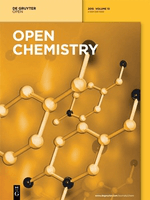
Open Chemistry
Advancing the Frontiers of Chemical KnowledgeOpen Chemistry, published by DE GRUYTER POLAND SP Z O O, is a distinguished peer-reviewed journal that has been serving the global chemistry community since its inception. With an ISSN of 2391-5420 and an E-ISSN also of 2391-5420, this open-access journal has been accessible to researchers and practitioners alike since 2015, ensuring a wide dissemination of high-quality research findings. Located in Germany, specifically at BOGUMILA ZUGA 32A STR, 01-811 WARSAW, MAZOVIA, POLAND, Open Chemistry aims to publish innovative research across various chemical disciplines, with special attention to miscellaneous chemistry and materials chemistry. It is currently ranked in the Q3 category for both fields as of 2023, reflecting its solid standing within the academic community, with specific ranks of 187/408 in General Chemistry and 153/317 in Materials Chemistry, corresponding to respective percentiles of 54 and 51. Open Chemistry not only enhances the accessibility of cutting-edge research but also serves as a vital resource for students, professionals, and scholars seeking to advance their knowledge in the rapidly evolving landscape of chemical sciences.

Frontiers in Chemistry
Exploring Diverse Dimensions of Chemical Science.Frontiers in Chemistry is an esteemed and innovative Open Access journal published by FRONTIERS MEDIA SA, based in Lausanne, Switzerland. Since its inception in 2013, the journal has established itself as a leading platform for the dissemination of high-quality research across a broad spectrum of chemistry disciplines, achieving a notable Q1 classification in the miscellaneous chemistry category as of 2023. With an impressive Scopus rank, placing it at 72nd out of 408 in General Chemistry and falling within the 82nd percentile, Frontiers in Chemistry is committed to publishing significant findings that contribute to the advancement of the field. The journal's Open Access model ensures that research is freely accessible to all, fostering a greater exchange of knowledge and collaboration among researchers, professionals, and students globally. It covers a range of topics, from organic and inorganic chemistry to materials science and biochemistry, making it an essential resource for anyone seeking to stay at the forefront of chemical research.
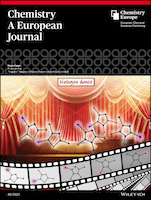
CHEMISTRY-A EUROPEAN JOURNAL
Innovating Catalysis for a Sustainable FutureCHEMISTRY-A EUROPEAN JOURNAL is a premier academic journal published by WILEY-V C H VERLAG GMBH, specializing in the diverse fields of chemistry and catalysis, with a distinguished focus on organic chemistry. Since its inception in 1995, the journal has established itself as an authoritative resource for researchers and professionals, currently classified in Q1 in Chemistry (miscellaneous) and Organic Chemistry, reflecting its high-quality contributions to the scientific community. With an impressive impact factor and robust Scopus rankings—#33 in Organic Chemistry and #26 in Catalysis—this journal serves as a vital platform for disseminating innovative research findings and critical advancements in chemical sciences. Although not an open-access journal, it provides valuable access options for institutions, ensuring wide reach and engagement within the scientific community. As it converges into 2024, CHEMISTRY-A EUROPEAN JOURNAL remains a key resource for anyone dedicated to advancing the frontiers of chemistry research.

JACS Au
Empowering the global scientific community with groundbreaking research.JACS Au, published by the American Chemical Society, is a premier open access journal dedicated to advancing research in the rapidly evolving fields of analytical chemistry, organic chemistry, and theoretical chemistry. Since its inception in 2021, JACS Au has quickly established itself as a leading platform for high-quality research, reflected in its Q1 rankings across multiple categories for 2023, including Organic Chemistry and Analytical Chemistry. The journal focuses on innovative methodologies and applications that drive the discipline forward, making it an essential resource for researchers, professionals, and students alike. With an impressive Scopus ranking, consistently placing in the top tiers of its categories, and offering a broad range of access options for its readership, JACS Au aims to foster collaboration and disseminate transformative ideas that impact the global scientific community. Exploring diverse topics within chemistry, this journal provides a vital conduit for sharing groundbreaking research and enhancing scientific dialogue.
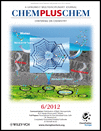
ChemPlusChem
Empowering Scientists with Open Access to Cutting-Edge ResearchChemPlusChem is a premier journal published by WILEY-V C H VERLAG GMBH, dedicated to the vibrant field of chemistry. With an ISSN of 2192-6506 and an impressive Q1 ranking in Scopus's 2023 category for miscellaneous chemistry, this journal serves as a significant platform for the dissemination of high-quality research and innovative findings. Since its inception in 2012, ChemPlusChem has fostered interdisciplinary collaborations, encapsulating a wide array of topics within chemistry that facilitate scientific advancement and education. The journal features a robust open access system, enabling extensive visibility for authors while providing easy-to-access resources for researchers, professionals, and students globally. Located in Weinheim, Germany, ChemPlusChem reflects international standards and ambitions, striving to enrich the global scientific community through rigorous research and engaging scientific discourse.
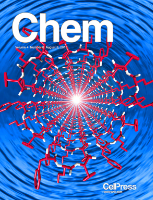
Chem
Empowering Global Access to Chemical KnowledgeChem, published by CELL PRESS, is a renowned academic journal that has rapidly established itself as a leading platform for cutting-edge research in diverse areas such as biochemistry, chemical engineering, materials chemistry, and environmental chemistry. Released under the ISSN 2451-9294, this esteemed journal has achieved an impressive Q1 category ranking across multiple disciplines in 2023, highlighting its significant impact and prominence within the academic community. With a strong focus on innovative studies and interdisciplinary approaches, Chem fosters a vibrant dialogue among researchers, professionals, and students, making it an indispensable resource for those seeking to advance their knowledge and contribute to the evolving field of chemistry. As an open access journal, it aims to democratize knowledge, ensuring that critical research is accessible to a global audience. With its headquarters based in Cambridge, MA, it continues to lead the charge in the dissemination of pivotal findings that shape our understanding of chemical sciences.

Canadian Journal of Chemistry
Catalyzing Knowledge in the Heart of CanadaWelcome to the Canadian Journal of Chemistry, a prominent publication dedicated to advancing the study of chemistry through original research and critical reviews. Published by Canadian Science Publishing, this journal has been a cornerstone of chemical research since its inception, covering a broad spectrum of topics within the field, including catalysis, organic chemistry, and general chemistry. With an ISSN of 0008-4042 and E-ISSN of 1480-3291, it provides a vital platform for researchers, professionals, and students to disseminate their findings and engage in scholarly discourse. Impact Factor is currently in development, with the journal classified in the Q4 category for catalysis and Q3 for miscellaneous chemistry fields, signifying its evolving contributions to the scientific community. The journal operates without an open access model, which ensures a rigorous peer-review process while maintaining subscription access for institutions and libraries. Located in Ottawa, Canada, the Canadian Journal of Chemistry continues to provide an invaluable resource for those dedicated to the scientific pursuit of chemistry, making significant strides in fostering interdisciplinary approaches and innovative research methodologies.
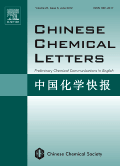
CHINESE CHEMICAL LETTERS
Advancing Knowledge, Shaping the Future of Chemistry.CHINESE CHEMICAL LETTERS, published by Elsevier Science Inc, is a premier journal in the field of chemistry, notably recognized for its focus on innovative research in multidisciplinary areas of the discipline. With its ISSN 1001-8417 and E-ISSN 1878-5964, this journal has established itself as a valuable resource for academics since its inception in 1996, with coverage extending to 2024. Categorized in the top tier (Q1) for Chemistry (miscellaneous), it ranks an impressive #37 out of 408 in Scopus's General Chemistry category, reflecting its significant influence and contribution to the field, with a remarkable 91st percentile ranking. Though it does not currently offer open access, CHINESE CHEMICAL LETTERS remains accessible to researchers through institutional subscriptions and provides crucial insights and advancements in chemical research, making it an essential publication for professionals and students aiming to stay at the forefront of chemical sciences.